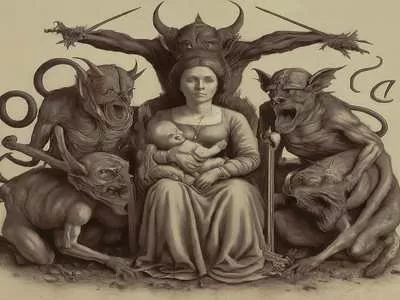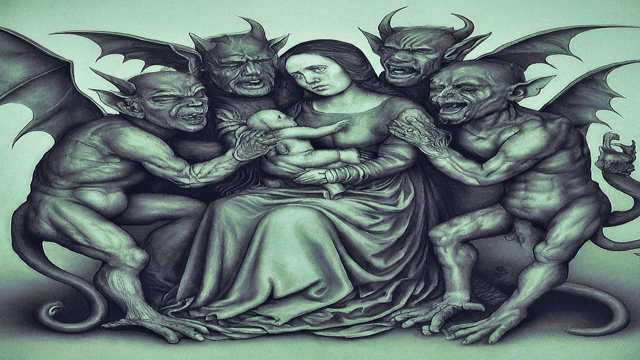In the late 16th century, the world of exorcism and witchcraft was rife with intrigue, deception, and fervent belief. One of the most notable figures in this tumultuous landscape was John Darrel, a former sizar at Queens’ College, Cambridge, who became a prominent exorcist and preacher.
A sizar is a student who receives assistance with meals, reduced fees, and lodging in exchange for work, often in the kitchens. Darrel’s journey from a humble student to a notorious exorcist is a fascinating tale of ambition, manipulation, and eventual downfall.
Darrel’s early education at Cambridge laid the groundwork for his later pursuits. After earning his BA, he moved to London to study law but soon found his calling in preaching and the Puritan faith. His notoriety began in 1586 when he claimed to have exorcised Katherine Wright, a woman allegedly possessed by a devil. Following this, he reported that she was repossessed and subsequently exorcised eight more devils. This dramatic case captured public attention, and Darrel documented it in a book, establishing his reputation as an exorcist.

In 1596, Darrel gained further fame with the case of Thomas Darling, known as the Boy of Burton. This fourteen-year-old boy exhibited alarming symptoms, including convulsions, vomiting, and visions of green angels and cats. The spectacle attracted crowds, and Darrel’s fame as an exorcist began to spread. Jesse Bee, a local saddler from Burton, also wrote about the case, further amplifying Darrel’s notoriety.
Seeking to rid his household of evil spirits, Nicholas Starkie sought out Darrel and brought him to Cleworth. After performing exorcisms, Darrel wrote another book detailing his experiences. By 1597, he had moved to Nottingham, where he encountered William Somers, a twenty-year-old musician’s apprentice who displayed similar symptoms to those of Darling. Somers would froth at the mouth, perform obscene acts, and exhibit a lump that moved about his body. As Darrel cast out the devils, crowds gathered not only to witness the exorcisms but also to hear his fiery sermons.
However, Darrel’s methods soon drew scrutiny. He began using Somers to identify alleged witches, leading to the imprisonment of several women on charges of sorcery. Unfortunately for Darrel, one of the accused was related to an influential Alderman. This connection prompted an investigation into Darrel’s practices. During the inquiry, Somers confessed that the entire act had been a fraud, demonstrating his symptoms on command.

In a desperate attempt to maintain his influence, Darrel replaced Somers with his sister, Mary Cooper, and continued his exorcisms and preaching. However, the investigation continued, and Katherine Wright eventually confessed that Darrel had coached her on how to simulate possession. Somers corroborated this, revealing that Darrel had begun training him in 1592 and had sent him to Burton for further instruction on deception.
The evidence against Darrel was overwhelming. A court, including the Archbishop of Canterbury and other high-ranking officials, condemned him as a fraud. He was deposed from the ministry and sentenced to prison. Tragically, his fraudulent claims had dire consequences; Alice Goodridge, a sixty-year-old woman condemned based on the testimony of the Boy of Burton, died in custody, while Edmund Hartley was executed at Lancaster.
Samuel Harsnett, the chaplain of the Bishop of London and later Archbishop of York, published a scathing critique of Darrel’s practices in 1599, titled A Discovery of the Fraudulent Practices of John Darrel. Harsnett aimed to discredit both Catholic and Puritan practices surrounding exorcism and witchcraft, arguing that the belief in demonic possession was mere superstition.
The impact of these events resonated throughout society, even reaching the literary world. Playwright Ben Jonson referenced Darrel’s exploits nearly twenty years later in his play The Devil is an Ass (1616), highlighting the lasting impression of Darrel’s fraudulent activities on public consciousness.
John Darrel’s story serves as a cautionary tale about the dangers of manipulation and the consequences of unchecked ambition. His rise to fame through exorcism and subsequent fall from grace illustrate the complexities of belief, power, and the human condition in a time when fear of witchcraft was pervasive. As we reflect on this historical episode, it is essential to recognize the broader implications of such frauds on innocent lives and the societal fabric of the time.

